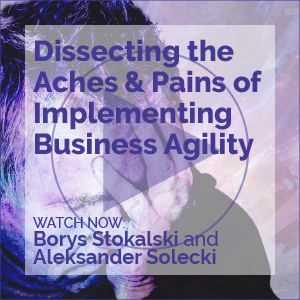Outsourcing and Web Services: More Than Just Cost-Saving Tools
Product Development Organizations Lead Agile Development Movement -- Spurred on by the Need for Speed
Project Close
When, Not If
When, Not If
Content Management Tools
Last week I discussed the growing importance of content management for some industries (" Content Management and XML," 3 July 2002). In essence, content management involves breaking documents into their constituent elements and storing each element so that it can be maintained and reused independent of the document for which is was originally created.
A Simple Step to Increasing E-Commerce Confidence
The revolution of the Internet has had a great impact on the way that business is done, people communicate, and information is shared. Today it is possible to order just about any product over the information superhighway, but the fear over security reduces the Internet's potential.
A Simple Step to Increasing E-Commerce Confidence
The revolution of the Internet has had a great impact on the way that business is done, people communicate, and information is shared. Today it is possible to order just about any product over the information superhighway, but the fear over security reduces the Internet's potential.
A Simple Step to Increasing E-Commerce Confidence
A Simple Step to Increasing E-Commerce Confidence
Feasible Risk Management Futures: Majesty, Misery, or Melancholy?
I realize, of course, that predicting the future is a dangerous business. As management theorist Peter Drucker has written, "Forecasting is not a respectable human activity and not worthwhile beyond the shortest of periods" ( Management: Tasks, Responsibilities, Practices).
Feasible Risk Management Futures: Majesty, Misery, or Melancholy?
I realize, of course, that predicting the future is a dangerous business. As management theorist Peter Drucker has written, "Forecasting is not a respectable human activity and not worthwhile beyond the shortest of periods" ( Management: Tasks, Responsibilities, Practices).
The Natural Pattern of Organizations
The Internet, and the emerging "hypernet" of networked applications and communication devices, are the backbone of the knowledge economy. Networked technologies are accelerating the shift in the economic foundation from the physical to the non-physical, changing the world conversation and allowing the natural pattern of organizations to emerge.
The Natural Pattern of Organizations
The Internet, and the emerging "hypernet" of networked applications and communication devices, are the backbone of the knowledge economy. Networked technologies are accelerating the shift in the economic foundation from the physical to the non-physical, changing the world conversation and allowing the natural pattern of organizations to emerge.
Content Management and XML
The interest in XML continues to grow. Like any young technology, everyone is exploring possible uses and no one is sure where the technology will provide significant payoffs. The XML enthusiasts believe there are hundreds of ways that XML can be successfully used. More conservative managers know that many things besides the technology determine if it will be successful.
Soft Testing
The following scenario was described in an online tutorial I came across recently:
Soft Testing
The following scenario was described in an online tutorial I came across recently:
Agile Software Maintenance
Soft Testing
The following scenario was described in an online tutorial I came across recently:
Soft Testing
The following scenario was described in an online tutorial I came across recently:


